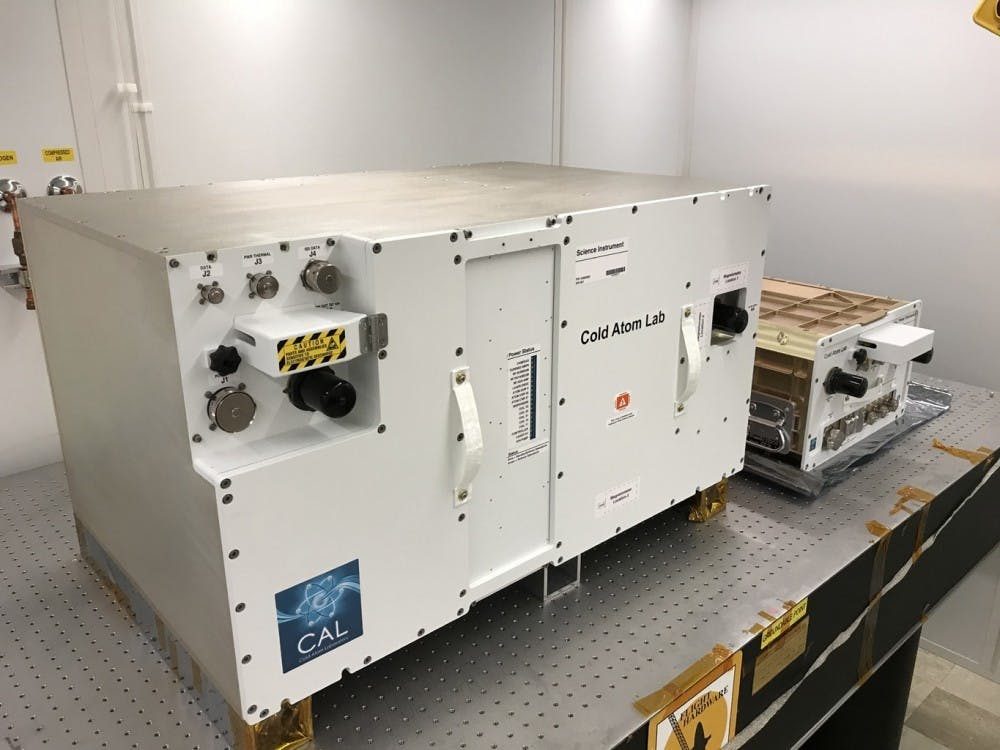Assoc. Physics Prof. Cass Sackett has designed original experiments for the Cold Atom Laboratory, an ultra-cold physics lab housed in the International Space Station — NASA’s orbiting space station — since May of this year.
According to Scientific American, most of us encounter quantum mechanics every day — the phenomenon can be found in everything from computers to Blu-ray players. To Sackett, the value of quantum mechanics is learning how to apply the wave nature of an atom — a process known as interferometry. Specifically, Sackett believes observing atoms at low temperatures and zero gravity can broaden knowledge in the field of quantum mechanics.
“The way we see the world is not quite how it really is. Sackett said. “Atoms also act like waves or ripples in a pond, so quantum mechanics says that everything is both a particle and a wave.”
According to Sackett, studying atoms this closely is not easy, since we typically cannot observe both the particle and wave nature of atoms at the same time.
However, scientists have discovered a way to get around this obstacle. By making temperatures extremely cold, atoms slow down, which allows for interferometric study.
Additionally, because there is zero gravity is space, there is also a way to make atoms stand still in midair. By shooting CAL into space, Sackett believes we can achieve ideal conditions for studying quantum mechanics — an initiative that brought him to the University in 2001.
According to Sackett, experimenting with CAL was the University’s idea. With the help of NASA’s Jet Propulsion Laboratory and a few independent technology companies, Sackett and the University have been conducting interferometric experiments with CAL since its space launch in May.
When he goes to CAL’s control center at NASA headquarters, Sackett can “get real data back in real time” from the push of a button.
According to Sackett, CAL will remain at the International Space Station for roughly three to five years, with experiment adjustments and replacement parts coming after about two years. When astronauts arrive to make these adjustments, a new set of experiments will likely arise.
Sackett said CAL is unlikely to bid the International Space Station farewell after its three to five year tenure. NASA and Germany’s space agency are planning a follow up project to add a new apparatus called BECAL — which is aimed at high performance atom infratometry — to CAL.
Through his study of infratometry, Sackett hopes to determine a high-precision way to measure gravity, down to 10 digits.
According to Sackett, the behavior of waves is sensitive to its surrounding environment and thus, at a certain location, can precisely predict the level of gravity — as scientists can correlate specific wave patterns to a level of gravity through mathematical calculations.
Sackett also said that the implications of this principle are diverse — they can be found from the oil industry to navigation techniques.
To first-year College student Zaki Panjsheeri, Sackett’s research means something more.
“It makes the classroom feel more real,” Panjsheeri said. “I’ve been drowning in linear algebra, calculus and physics for the past half semester and it’s been very difficult. But, seeing these people do this kind of work helps me see there is a tangible goal in mind.”
First-year College student Enrique Unruh said Sackett’s research makes him proud of the University.
“As a U.Va. student, there is a certain amount of pride that the name of the University I attend is impressive on the global scene,” Unruh said. “Even though I’m not a physics student, I’m still very interested in this.”







